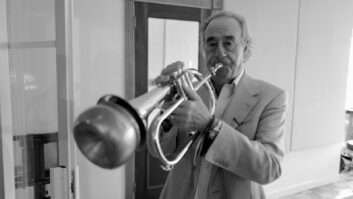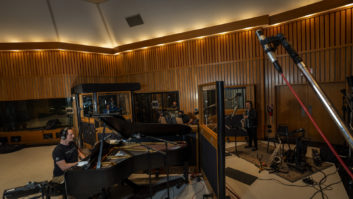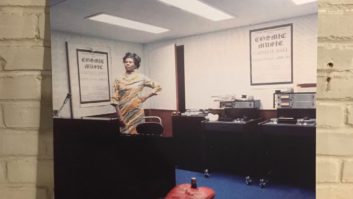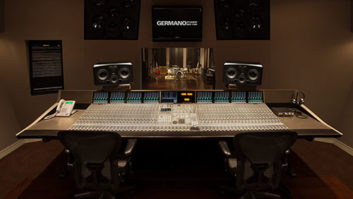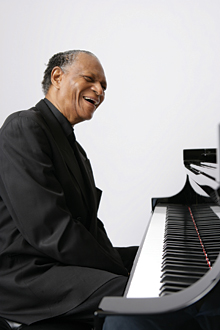
Photo: John Abbott
Over the course of a career spanning five decades, jazz piano giant McCoy Tyner has played with scores of great musicians on literally hundreds of albums, both as leader and bandmember. Of course, he’ll forever be most associated with John Coltrane’s famous early ’60s quartet, but through the years this fearless and utterly distinctive stylist has been remarkably adaptable, whether with Eric Dolphy, Milt Jackson, Wayne Shorter, Pharoah Sanders or even swing violinist Stephane Grappelli. On scant few occasions, he has plied his craft with electric guitarists — Grant Green being the most notable — but it’s safe to say he’s never made an album quite like his recent Half Note Records release, Guitars.
For these quartet recordings, Tyner was joined by the formidable rhythm section of bassist Ron Carter and drummer Jack DeJohnette — legends themselves — and a handful of highly creative axemen: John Scofield, Marc Ribot, Derek Trucks (of the current Allman Bros.; a young phenom), Bill Frisell and banjo sensation Béla Fleck. The result is a fresh and exciting collection of tunes that range from freeform improvisations (with Ribot), to Coltrane classics (“Mr. P.C.” with Scofield, “My Favorite Things” with Fleck), to originals by Tyner and the various soloists, and unusual choices like the folk anthem “500 Miles” (Ribot) and a beautiful take on “Greensleeves” (Trucks).
The album was produced by John Snyder — whose decades-long CV is peppered with dozens of notable albums by top jazz, blues and even jam-band artists — and engineered and mixed by Randy Funke, who captured the quartets in two day-long sessions at New York’s Clinton Studios in September 2006. Snyder says, “The record company wanted to get McCoy together with the commercial players — Larry Carlton, George Benson, people like that — but I wanted to get what I’d call the ‘left-wing’ guys. I wanted to get really adventuresome players with McCoy.”
Funke — a Connecticut-based guitarist, engineer, computer wiz and video editor — has worked on projects with Snyder for the past five-plus years, including a series of Master Class DVDs with the likes of Cecil Taylor, Phil Woods, Toots Thielemans, Clark Terry and others, available through www.artistshousemusic.org, the Website of the educational Artists House Foundation founded and run by Snyder. The Tyner Guitars sessions were also shot for a remarkably illuminating DVD (packaged with the CD), which allows the viewer to choose which player(s) to watch at any given moment. As Snyder notes, “If you want to go to school with Ron Carter, you can do it,” or you can watch a pre-edited version or all four at once through iso split-screen.
During the sessions, Snyder was in the room with the musicians, even manning the camera trained on Tyner. “I like to be in the room when I produce,” he says. “On the other side of the glass you’ve always got hangers-on and people talking, and you can’t entirely tell what’s going on. You certainly can’t pick up on the subtleties of the communication among the musicians.”
The sessions were tracked live to Pro Tools through Clinton’s 8000 Series Neve and “as many inboard mic pre’s as possible,” Funke says. “I didn’t really EQ or compress anything at that stage.” Miking was fairly simple. On the piano he used three Neumann U87s: “I like to have the spread of left and right; the middle one I like to use as a mono to give it a larger-than-life sound.” Carter’s standup bass was a combo of a DI and a Neumann M150 six or seven inches away. Funke says that drummer DeJohnette is “like the undulating undercurrent of the world. It seems like he’s playing every drum every second!” To capture his kit he used an Audix D6 on the kick, a Shure 57 on the snare, Shure SM81 on hi-hat, Sennheiser 421s on toms and two U87s as close overheads. “Some songs have more overhead than others,” he notes. “Frankly, I tend to gravitate toward a dry, in-your-face, non-roomy sound a lot of the time. But this had a lot of natural room sound in there.” For the guitarists, Funke used two mics, side by side, a couple inches from each’s amp (or two, in Frisell’s case) — a 57 and an AKG 414. Fleck’s banjo was miked with an 87 and a 414.
Funke mixed the album “in the box” at his home studio, Zone Media, sending mixes back to Snyder, who was in New Orleans, listening on his beloved Tetra speakers. On most songs there was a minimal number of edits; then there were Fleck’s tracks: “Béla likes to overdub very, very small passages of notes,” Funke says. “He did 46 takes of an eight-bar phrase, and then he wanted to get a copy of the hard drive so he could edit his takes and get the things he wanted on his own. So he chopped stuff up at his studio and put the notes in he wanted. He did so many edits. Scofield overdubbed a solo but we didn’t end up using it. And Mark Ribot overdubbed a few little things. But most of it is really the way it went down in the studio.”
